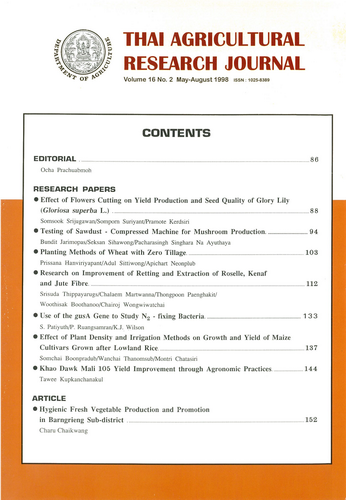Use of the gusA Gene to Study N2 fixing Bacteria
DOI:
https://doi.org/10.14456/thaidoa-agres.1998.12Keywords:
GUS gene, transposon, transconjugantAbstract
The transposon mTn5SSgusA20 from e. colis S1 lamda-pir as a donor strain was inserted into the genome of Bradyrhizobium japonicum strains THA-7, USDA 110 and Bradyrhizobium sp. strains TAL 182, TAL 1376, TAL 182 as the recipients. Plate matings were carried out as described by Wilsom (1995). Transconjugants were checked by inoculating into the host plants grown in Leonard's Jars with N-free solution (Munn's) and 28-day old nodules were soaked in GUS -extraction buffer plus the GUS substrate (X-Gluc 100 ug/ml). The results indicated that mating efficiencies wee in between 10^7-10^8. All nodules inoculated with transconjugants turned blue within 2-48 hours while nodules from parental strains remained unstained.
Downloads
Published
How to Cite
Issue
Section
License

This work is licensed under a Creative Commons Attribution-NonCommercial-NoDerivatives 4.0 International License.
Thai Agricultural Research Journal



